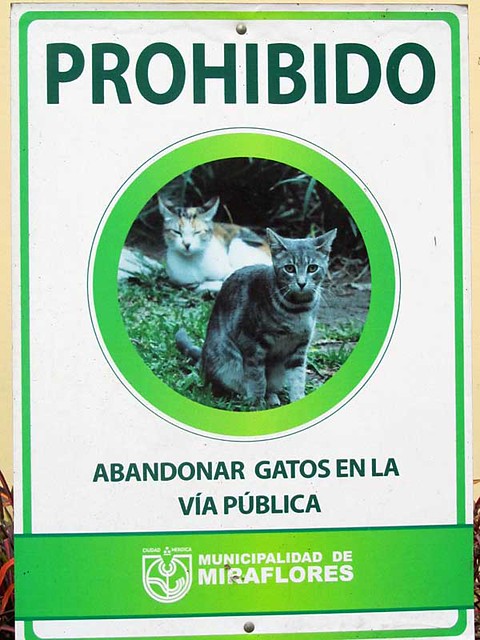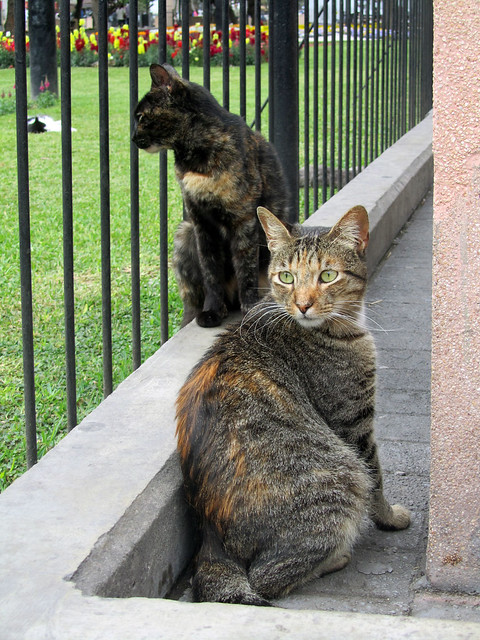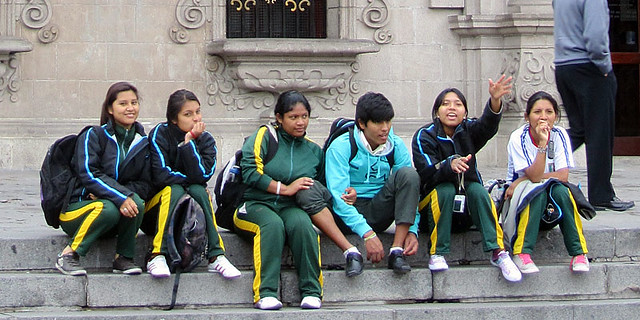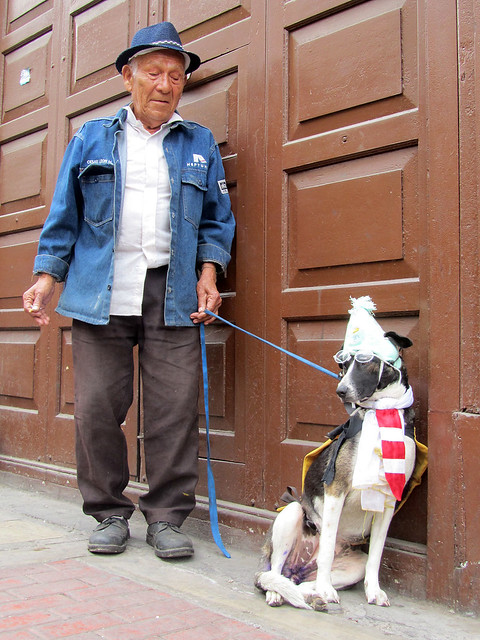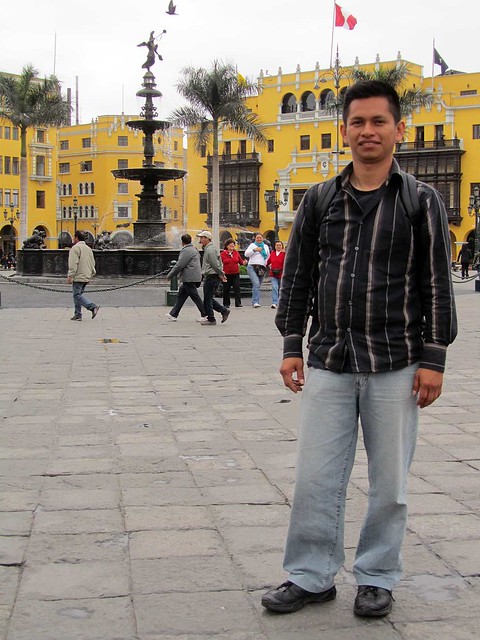With just one day to explore Lima, there’s no hope to see everything. I don’t even try. I spend the first part of the day around Plaza de Armas with a local guide and then return to the hotel in Miraflores. I’ll explore more of Lima at the end of my trip.
After a nap, I put on my jacket and head outside to explore Miraflores. I’m actually looking for dinner — and probably at a KFC. But instead of eating, I walk.
I walk down past the taxistand where the minivans packed with people stop to pick up more passengers. (As they stop, a man leans out the door — or walks alongside the van — announcing destinations and asking people to climb aboard.)
I walk past Iglesia de la Virgen Milagrosa (the Church of the Miraculous Virgin) and see that folks are flocking to the doors. I go inside too. Because I know little of Catholicism, I can’t tell if it’s the start or the end of Mass — or if it’s Mass at all — but I stand for five or ten minutes to listen. I’m not at all religious, but I’m moved by the prayer and the song, the strange familiarity of the ritual. I look at the people in the pews and, for a moment, I wish I could trade places with them.
Instead, I leave. I walk toward Kennedy Park to see the cats. Miraflores apparently has a cat problem. People dump their unwanted animals here, and they roam the streets begging for food. As a Crazy Cat Man, this makes me happy. But the local government doesn’t like it.
I smile at the teenage girls who stroll past. They’re talking and laughing and having a good time. One girl in braces is struggling to ride her skateboard on the cobblestone sidewalk. And there’s un niño, a boy about three years old who is chasing one of the cats into the street. (There’s no traffic here; it’s like a pedestrian mall.)
At the park, I sit on a bench and write. Just like I used to! It’s been too long since I’ve done this: sitting still, watching the details of life as it flows around me, writing it all down. I’ve been too busy, which is a lousy excuse. Because this! This is what I love.
And so I spend half an hour watching the people. And the cats. And the people with the cats. The city may not want the cats here, but it’s clear that the people do. They smile when they see them. Every few minutes, somebody stops to call to them. Sometimes one or two cats come closer. They want food, I think, but they settle for being patted and petted. (One cat tries to enter the church but is quickly rebuked.)
There are cats on benches. There are cats on the lawn. There are cats on the sidewalk, and there are cats standing still as stone statues in the middle of the flower beds.
I know this isn’t all of Lima. In fact, it’s completely unrepresentative of the city as a whole. But in this moment, in this place, I love the town.
As I’m preparing to leave, a little tortoise-shell cat comes up to me and meows. I pet her and she rubs her face against my hand. She talks to me. When I stop petting her, she stands on her hind legs and paw-paws me, asking for more.
For a moment, this feels like home.

